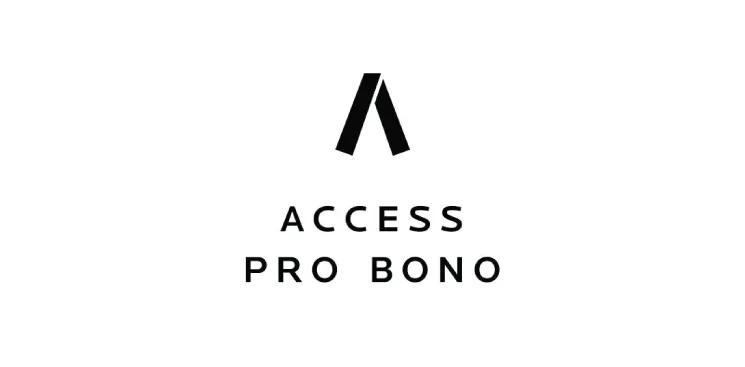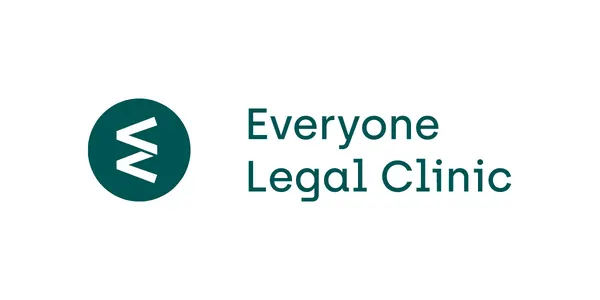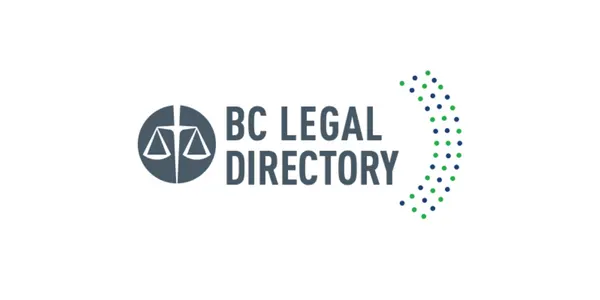
I’ve heard if I’m injured in an accident, I can figure out how much compensation I can get by using a special formula. Is that true?
If you’ve been injured in an accident, you may be able to get money from the party who caused your injury. The law uses the term damages. The process to determine damages is more involved than you might think. There’s no standard formula. Many factors come into play, and every person’s situation is different. Learn how to figure out what your claim might be worth.
What you should know
"I was walking to the car, my hands full of grocery bags. It was dark out and the store parking lot was poorly lit. The next thing I knew, I was flat on my back after stepping into a melon-sized pothole. I fractured my hip and had a concussion. I was off work for three months. It’s nearly two years later, and I’m better but not the same as I was before the accident. I want to know how much compensation I can get for all I’ve lost."
– Jacob, Quesnel, BC

After a serious accident, it may take you a long time to recover from your injuries. In some cases, your injuries may be permanent. If another person is legally at fault, you can get damages for your losses. Typically, this happens through settlement negotiations or after a trial.
Most damages in a personal injury case are to compensate you for what you lost due to the accident. This includes money for the pain and suffering, loss of abilities, and emotional distress you’ve experienced. It also covers reimbursement for known costs like lost wages, medication, and treatments.
While no amount of money can make up for the loss of good health or suffering a permanent disability, compensatory damages are given to “make you whole again.” They’re meant to put you back to where you’d be but for the accident (that is, if the accident hadn’t happened). This involves figuring out what your injuries have cost you monetarily, physically, and mentally.
In some cases, damages have other purposes, such as to punish the other party for their conduct. These are called punitive damages.
There are many different ways that someone can be affected by their injuries after an accident. Trying to put a dollar figure on all of them isn’t easy. While some damages (like treatment costs) are relatively easy to quantify, others (like future financial losses) aren’t at all.
Non-pecuniary damages
Non-pecuniary damages are also known as general damages. They’re meant to compensate you for the pain and suffering your injuries have caused you. They also cover loss of enjoyment of life and loss of amenities if you’re unable to enjoy hobbies and recreational and social activities.
These damages are mainly subjective. They don’t come with a receipt or invoice, making it harder to place a monetary value on them.
Income loss
Income loss is a calculation of the impact the injuries had on your earnings. This includes income you’ve already lost or would’ve earned if the accident hadn’t happened (say you were about to start a new job, for example). It also includes income you would have been able to earn in the future if the accident hadn’t happened (also known as loss of earning capacity).
Special damages
Special damages are out-of-pocket expenses that have already been paid. Often, there are receipts or invoices for them. They include costs of treatments, medications, property damage (such as torn clothing or broken eyeglasses), and so on.
Cost of future care
These are expenses related to medications, treatments, and caregiver services in the future, after any settlement or trial. Typically, experts are consulted to help figure out this cost.
Loss of housekeeping capacity
These costs are for the loss of ability to do housekeeping tasks like cooking, cleaning, or yard maintenance. The type and size of your home can affect the amount of compensation you get.
Other types of damages
A court can award other types of damages after a trial. For example, aggravated damages give compensation when another person’s actions have caused mental distress or injury to dignity. They’re similar to, though distinct from, punitive damages, which courts rarely award. These are meant to punish the other party and deter similar conduct in the future. (For example, see this hit-and-run motor vehicle accident case.)
Nominal damages are given when a court decides a person’s injury is minor. These are often no more than a few dollars.
In 1978, the Supreme Court of Canada heard a case about a young man who became a quadriplegic after a car accident. The court decided that damages for pain and suffering can help make life more tolerable — but they can never provide true and complete compensation. With that in mind, the court set a $100,000 limit on the amount of pain and suffering damages that an injured person can receive. With inflation, the current value of this cap on non-pecuniary damages is about $451,000, even in the most serious cases.
Cap on damages for minor car accident injuries in BC
In BC, there is also a minor injury cap on non-pecuniary damages for car accidents occurring between April 1, 2019 and May 1, 2021. The cap is $5,500 to $5,672, depending on exactly when the accident happened. On May 1, 2021, a new car insurance model came into effect, and the minor injury cap doesn’t apply to accidents that happened after that date. Here, we explain how this new model works.
The more serious your injury and the longer your recovery period, the more you’re likely to receive in damages.
Let’s take a look at a couple of examples. In one court case, a customer slipped and fell on some ice cream in a shopping mall. She was awarded damages totalling $6,600 for a knee injury that improved within two and a half months. But in this case, a customer who slipped and fell in a restaurant washroom got $65,000. He had shoulder injuries and had to undergo knee surgery. Five years later, he was still unable to return to his pre-accident level of work and activities.
Two slip and fall cases. But more serious injuries and treatment and a longer recovery period contributed to a much higher damage award in the second case.
Age can make a difference
Other factors, such as age, can affect your recovery from a personal injury accident. It may take an older person longer to recover than a younger person from the same type of injuries. This might result in an older person being entitled to a higher amount of damages.
In fact, some courts in BC have made higher non-pecuniary damage awards to older people on the basis that an injury may have a greater impact on an older person than on a younger person. Cases applying this golden years doctrine include this one and this one.
However, other BC cases have actually reduced the non-pecuniary damage award on the basis that an elderly person will not have as long to live.
Yet other cases (like this one) have opted for an in-between approach, saying the competing considerations may balance each other out.
At the time of your accident, you may already have a previous injury, health condition, or disability. If the accident makes any of these worse, you can still get damages; you might even get more than others would get. You’re entitled to damages that restore you to your pre-accident position — no more, no less.
Let’s get more specific. Say you’re injured in an accident, and it triggered an otherwise asymptomatic or stable health condition. Your injuries may be more serious and last longer than those an average person would experience in the same situation. Regardless, you’re still entitled to full (and potentially higher) compensation for your injuries. This is known as the thin skull rule, and its aim is to protect the vulnerable. It says wrongdoers have to “take their victims as they find them.” This means that a person causing injury must fully compensate the victim, even if the injuries are unexpectedly severe due to the victim’s pre-existing condition.
There is an exception, though. If your pre-existing condition was active at the time of the accident, or is something that would have negatively affected you in the future anyway, you wouldn’t get full compensation. In that case, the person who caused the injury would only be responsible for your accident injuries — not the pre-existing condition. This is known as the crumbling skull rule. It prevents an injured person from being overcompensated.
If the person who caused your injury is at fault, they’ll be legally responsible for compensating you. But if there’s something you did or didn’t do that contributed to the accident or the severity of your injuries, you could be partly responsible for your own injuries. In law, this is called contributory negligence.
If you’re partly at fault for your injuries, this doesn’t necessarily mean you won’t get any damages. But it can affect the amount of damages you get. For example, in this case, the court reduced damages by a quarter after finding the injured person 25% responsible for their slip and fall.
If you’re found to be fully at fault for your injuries, you won’t get any damages.
Duty to mitigate damages
If you’ve been injured, you have a duty to take reasonable steps to minimize the negative impact of the accident on your life. You can do this, for instance, by continuing medical treatment and a recommended exercise program. If you don’t mitigate your losses, the court can reduce your damages.
Figuring out the damages you might get
Unless you recover quickly, you probably won’t be calculating personal injury damages for some time. But when it’s time for settlement discussions or trial, you need to be prepared to suggest or accept an amount of damages for your injuries. But how do you calculate them? We propose a five-step process:
Step 1. Obtain medical records and reports
Step 2. Add up out-of-pocket losses
Step 3. Research non-pecuniary damages
Step 4. Estimate future losses
Step 5. Get legal advice
The severity of your injuries plays a key role in determining the amount of damages you can get. That’s why, in the run up to settlement discussions or a trial, it’s important to:
get medical advice about how serious your injuries are
keep a daily written record or pain journal
get and keep copies of medical records, reports, and other important documents
continue seeing your doctor and other health care professionals regularly
follow the medical treatments and programs you’ve been referred to
If you’re dealing with an insurance company, they’ll want to see your medical records and reports. Your overall health before and after the accident are important pieces of information for them. Your medical records will show what impact the accident has had on your life and will shape the direction of your claim.
Stay organized
Keep your notes and all your evidence and research in one place, like in a file folder, binder, or on your phone or computer.
Some damages are more easily quantified than others. Gather together all your out-of-pocket losses or expenses that were due to the accident or your injuries. For example, note or gather any:
lost wages or other income you didn’t earn because of the accident
medical receipts (for medications and treatments, for example)
receipts for replacement items you’ve had to purchase (such as replacement glasses or an electronic device damaged in the accident)
mileage travelled to get to and from medical appointments
Add up these out-of-pocket costs.
Other kinds of compensation are not as straightforward to calculate. Non-pecuniary damages are usually determined by researching what other injured people about your age have been awarded by the courts in cases like yours. You may be able to get a similar dollar amount.
You can search for cases like yours on CanLII. This is a database of court cases from the last 30+ years. You can search by the type of injuries you suffered to see what kinds of damage awards courts have made. To start, include the type of accident as well, but if you don’t get many results, try again with just the type of injuries. So if you were injured in a car accident caused by an impaired driver (meaning you can sue them), you might start with:
motor vehicle accident, headaches, broken arm
Jot down the cases that are most similar to yours, and note the range of non-pecuniary damages that the courts awarded. (Each case is unique — hence the different damage amounts.)
Estimating future losses is also tricky. If your ability to earn income from work will continue to be affected by your injuries, estimate your loss of earning capacity. This is income you would have been able to earn in the future if the accident hadn’t happened, but now won’t be able to.
If you’re claiming for the cost of future care, an expert medical report by an occupational therapist or similar specialist setting out your prognosis can give you a figure you can use.
Because this area of law is complex, it’s best to get legal advice. A lawyer can help you understand what might be a reasonable range of compensation in your case. See below under who can help for options for free legal advice.
If you hire a lawyer
Lawyers often take personal injury cases on a contingency fee basis. This means you don’t have to pay any legal fees during the case. Instead, any fees are paid based on an agreed-on percentage of the money they recover for you. You do have to pay out-of-pocket expenses (such as for medical records and reports, long-distance calls, and so on), but these can be reimbursed if your claim is successful. Contingency fees often range from 25% to 40%, depending on the type of personal injury claim.
Working through an example
"Three years ago, I was injured when I slipped and fell in a grocery store. I was off work for two months because of a serious knee injury that required surgery. I also had headaches and back pain; the fall aggravated my pre-existing lower back problem. Ever since, I’ve had to limit my activities. I still can’t go for long runs, lift heavy items, or vacuum, for example. And I can only sit for an hour or two at a time. Along the way, I’ve been on medication, done physio, and seen other rehabilitation specialists. It’s been over a year since I started a court action and now the store is talking about settling. How much compensation can I get?"
– Rosie, Victoria, BC

First, Rosie should ask her doctor, physiotherapist, and other rehabilitation specialists she’s been seeing for a copy of her medical records. She should let her health care providers know she’s planning on sharing the records with the other party or their insurance company or lawyer.
Rosie should also ask her doctor(s) for a medical-legal report that describes her injuries, their severity and duration, and their impact on her life. The report should also set out the doctor’s medical opinion about her diagnosis, treatment, and prognosis. While Rosie will have to pay for the cost of the report up front, she can ask for reimbursement if her claim settles or she’s successful at trial.
Next, Rosie should add up her out-of-pocket losses. These include:
the wages she lost from being off work for two months (past loss of income)
her receipts for special damages for her prescription medications, massage and physiotherapy sessions, costs of any medical testing, and mileage to get to these medical appointments
Next, Rosie will want to do some research about non-pecuniary damages. On CanLII, here are examples of similar cases she would find, featuring serious knee injuries:
in this case, the court awarded the injured person $40,000
in this case, the injured person received $80,000
in this case, the court awarded $100,000 to the injured person
The range of non-pecuniary damages that may be appropriate in her case, then, may be $40,000 to $100,000. Keep in mind, though, that these amounts were awarded after a trial.
Next, Rosie will want to estimate her future losses. For example, she might estimate her cost of future care to be about $5,000, based on her doctors’ reports recommending medications and another six months of physiotherapy.
Rosie now has a rough idea about what her personal injury claim might be worth. But her case could be more complicated (because of her pre-existing condition, for example). And there could be other factors (age, contributory negligence, and so on) that could affect the amount she can get. In this case, for example, the injured person was awarded $55,000 in non-pecuniary damages. But this was reduced by half because she was found partly responsible for her injuries.
It’s best if Rosie speaks to a personal injury lawyer about her case to get advice. She will want to do this before she proposes or accepts any settlement offers or goes to trial.
Explore further
If you’re injured in a motor vehicle accident
Learn steps you can take if you're injured in a motor vehicle accident. We also walk you through what you need to know about insurance benefits for accident victims.
Who can help

Access Pro Bono's Legal Advice Clinics
Volunteer lawyers provide 30 minutes of free legal advice to people with low or modest income.

Access Pro Bono’s Everyone Legal Clinic
Clinicians provide affordable fixed-fee services on a range of everyday legal problems.

BC Legal Referral Service
Helps you connect with a lawyer, notary or paralegal for a free 15- to 30-minute consult to see if you want to hire them.

BC Legal Directory
Search for a lawyer by community, area of law, or language spoken. From the Canadian Bar Association, BC Branch.

